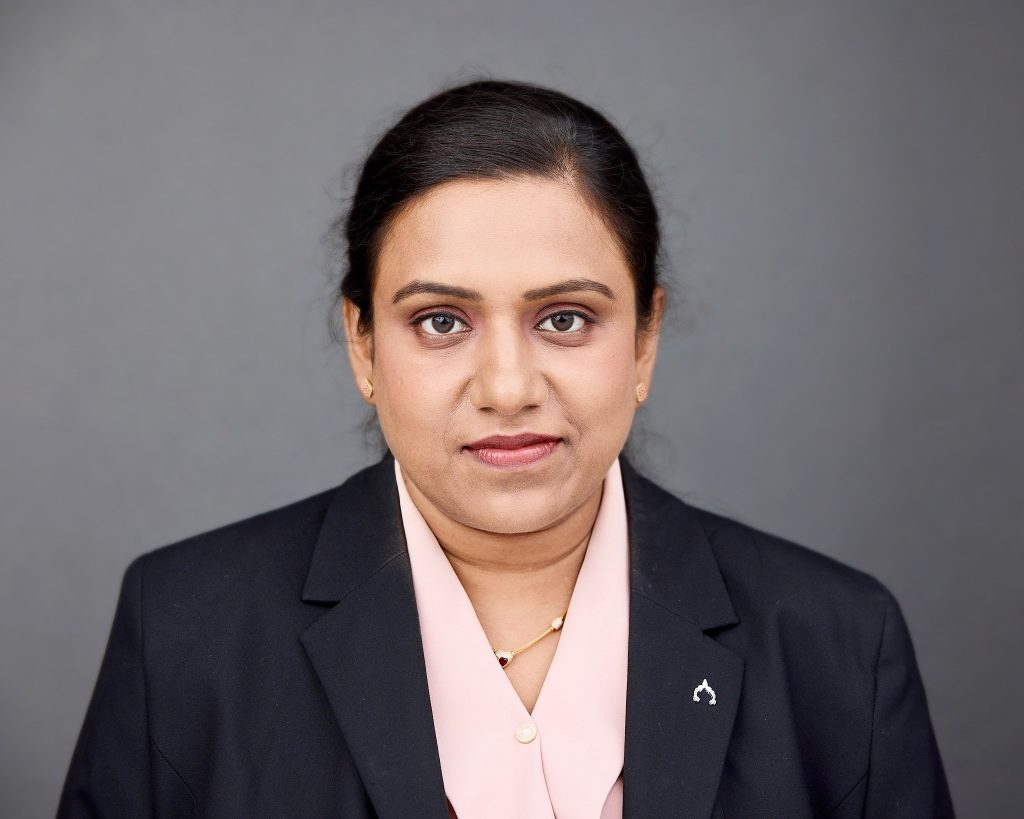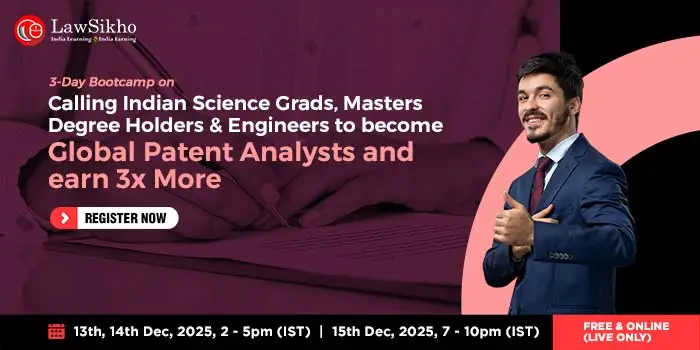This interview has been published by Anshi Mudgal and The SuperLawyer Team
You have been practicing IP law for over 17 years, covering trademarks, patents, copyrights, and design protection. Looking back, what initially drew you to intellectual property, and how has your passion evolved over time?
I am on the path I am today because of my guru, Professor P. Vanangamudi, whose initial guidance and mentorship shaped me into who I am now. I started my career with internships in criminal law and also experimented with some LPO work, but in 2005 I developed a fascination with intellectual property. I found patents particularly interesting because they connected back to my own scientific journey. On the first day of my internship, during a project with my learned mentors Adv. Surya Senthil (Ex-Technical Member – Copyrights) and Adv. Lakshmidevi Somanath (Ex-Technical Member – Trademarks), I was asked to draft an abstract for a patent application. That day proved to be a turning point, as it revealed how the law is deeply intertwined with scientific and innovative activity in very concrete ways. I was also fortunate to have Shri P. S. Surana (Co-founder, Surana & Surana International Attorneys) as my guide and mentor, whose constant encouragement to pursue IP and litigation drew me to focus on this field from that time onwards.
In February 2009, I joined R.K. Dewan & Co., 82 years old IP boutique Firm that provided me with the right platform to grow my passion into a career. This is where my interest in IPR grew even stronger. I had the opportunity to learn, practice, and handle the next level of IP under the guidance of the luminary Dr. Mohan Dewan and the powerhouse of RKD, Dr. Niti Dewan. Their mentorship shaped much of what I am today at R.K. Dewan & Co. Prosecution had always been my comfort zone, and I was initially hesitant to step into litigation. My senior colleague, Advocate Balaji, through his guidance and strategic approach, inspired me and gave me the confidence to embrace litigation alongside prosecution.
Over the years, what started as a fascination with patents grew into a much deeper dedication to all that is IP. I have come to see how trademarks, copyrights and designs are powerful strategic assets that promote innovation, branding and commercial growth beyond just legal rights. That evolution of seeing IP as a bridge between creativity, technology and commerce still inspires me everyday, even after 17 years of practice.
You pursued a B.A., B.L. (Hons) at the School of Excellence in Law, followed by a B.Sc. in Physics and an M.L. in International Law and Indian Constitution. How has this diverse academic background shaped your analytical approach and influenced your career in IP and litigation?
I became a Registered Patent Agent due to my science background, which helped me navigate the technical side of patents. That history has been useful all along, especially when dealing with inventors or dealing with hearings with other parties and explaining their ideas.
What really added value in my practice was my M.L. in International Law and Indian Constitution. I was given the big picture and scope of international and cross border cases that covered aspects of filings, prosecution rights and parties limitations. I worked at the Chennai firm of R. K. Dewan & Co., and worked on a few general civil litigation cases, as well. I always appreciated having a solid constitutional and international background, I could be exposed to the nature of the dispute while identifying where parties would have rights, an obligation (if there were any), and jurisdictional issues.
Having appeared before the Trade Marks Registry, Patent Office, Intellectual Property Appellate Board, and Madras High Court, could you share the most memorable cases that significantly shaped your expertise in IP litigation and prosecution?
Novartis vs Cipla – 3003/CHENP/2004, Chennai Patent office:
One of the most formative experiences in my journey as an IP litigator and patent professional was the privilege of assisting and learning from Dr. Mohan Dewan during the landmark Novartis pre-grant opposition hearing before the Patent Office, Chennai. This case, which revolved around Application No. 3003/CHENP/2004 for “Inhibitors of Tyrosine Kinases,” stands out not just for its legal complexities but for the many lessons it imparted about the nuances of Indian patent law, especially around amendments, inventive step, and sufficiency of disclosure.
The case centered around Novartis’ application (No. 3003/CHENP/2004) for a new class of tyrosine kinase inhibitors molecules with critical relevance in cancer treatment. The pre-grant opposition, filed by Cipla under Section 25(1), challenged the patent on multiple grounds, including obviousness (Section 25(1)I), insufficiency of disclosure (Section 25(1)(g)), and questions under Sections 3(d), 10(4), 57, and 59 of the Patents Act.
I experienced first-hand the intensity of argument and the importance of deeply understanding technical details and strategic legal arguments in a high-stakes Patent opposition. The proceedings, which saw formidable representation from both Novartis and the opponent, Cipla Ltd., brought several procedural and substantive issues into sharp relief.
I took part in examining prior art, dissecting the detailed claim amendments, and debating whether the reversal of an amide bond (and the resulting molecular changes) amounted to a non-obvious inventive step. The discussion on the sufficiency of disclosure was equally instructive particularly the Controller’s emphasis that, for new chemical entities (NCEs), it is the supported utility that matters most at the filing stage, not retrospective efficacy data, unless Section 3(d) is directly invoked.
This case underscored practical lessons in legal drafting, oral advocacy, and the handling of amendments under Section 59, where every narrowing of claims must remain anchored in the original disclosure. The Controller’s decision ultimately dismissed all opposition grounds, recognizing the inventive nature and adequate disclosure in the application, and allowed the patent to proceed. The clarity and logic with which the order dealt with the inventive step set a new benchmark in my understanding of patent jurisprudence in India.
I have personally argued over 400 patent matters before the Indian Patent Office, and have also actively conducted matters before the erstwhile IPAB, the Madras High Court, the Karnataka High Court, and various District Courts. Handling exhibits, preparing briefs, and formulating technical arguments in these cases has reinforced the critical importance of precision, clarity, and a comprehensive understanding of both law and technology. This experience has been a defining milestone in my practice, affirming that thorough preparation, strategic advocacy, and meticulous attention to detail are essential qualities for any successful IP litigator.
As an Advocate & Patent Agent at R K Dewan & Co., you handle brand advice, design protection, and IPR consultations. What are the biggest challenges brands face when entering the Indian market, and in India’s evolving digital and tech-driven IP landscape, what common pitfalls do innovators encounter? How can companies proactively protect their IP from an early stage?
India is an incredibly diverse and fast-moving market, with great buying opportunities but also very real issues for brand owners. Cost competition is high, squeezing brand owners’ margins, while the threats of counterfeits and infringement can damage brand owner’s reputations and market share. The complexity of regulations and enforceability adds to the pressure, and many companies, especially small to medium enterprises, fail to allocate the necessary budget or focus to protect their IP. However, many larger companies are becoming more proactive, and have dedicated IP divisions and in-house counsel to drive better IP management.
One of our clients had encountered issues while attempting to register their brand on the Government e-Marketplace (GeM), as this Govt platform intensified scrutiny on IP registrations, requiring comprehensive documentation to ensure authenticity and protect genuine brands. This was a strong reminder that the scrutiny of IP rights is more rigorous than ever. This is particularly relevant as online marketplaces keep expanding, requiring mandatory registration of IP as procurement authorities seek to verify authenticity. Too often, we see innovators engaging with their IP reactively, addressing infringement only after it happened, which is not an effective strategy in the digital and fast moving world we live in.
In short, companies entering the Indian market must recognize IP protection as a foundational business priority. A proactive approach to IP management, conducting searches, timely registration, and ensuring robust confidentiality protocols, will not only take away the pressure of challenges such as counterfeits or cost pressure, but will maximally enable commercial exploitation of innovation in a dynamic market.
You are a member of the INTA Brand and Innovation Committee. How has this international exposure influenced your perspective on global brand protection, and what emerging trends do you see shaping the future of trademarks and IP innovation worldwide?
Serving as a team leader of the Product & Counterfeit Technologies group within the INTA Brand and Innovation Committee has been an invaluable learning experience for me. In that capacity, I have been able to work with international Attorneys from different jurisdictions as we tracked global brand protection challenges, discussed emerging issues, authored articles and suggestions, and facilitated education webinars and roundtables.
This experience allowed me to see the highly variable way IP practice is conducted across countries, as it is shaped by the differing needs and differing levels of proactivity in IP practice. For example, while the US, Europe, and the United Kingdom have long-standing comprehensive infrastructure and practice in IP, I saw exciting and impressive development and, in many countries like South Korea, China, Japan, India, and Singapore, there is rapid growth and increasingly sophisticated practice in enforcement and justice in this area of innovation.
This has helped me to better appreciate that IP strategies for protection will require a more robust, adaptable, and technology-driven approach. I have also observed that emerging trends like the use of AI and other advanced technologies to combat counterfeiting are shaping the future of trademarks and IP innovation worldwide, demanding greater collaboration, vigilance, and creativity from brand owners and IP professionals alike.
Technology commercialization and contractual agreements have been a significant part of your practice. How do you navigate the complexities of IP licensing for both startups and established enterprises, and what are the key challenges involved?
In my opinion, guiding startups or medium sized businesses through the maze of IP licensing can justly be viewed as a balancing act based on knowledge and communication. One of the major challenges I see more often than not is the general lack of awareness (or desire to comprehend) responsible IP rights and licensing agreements. This is particularly true of startups. The case examples are pretty minimal, primarily because many new ventures receive limited or zero direction and experience managing and structuring these kinds of agreements.
Using a Academia-Industry partnership adds to the challenge, particularly for the commercialisation of technology and associated contracts. Parties need to specify who owns what, how the IP can be used, what will be the method of profit sharing. They also need to ensure how the confidentiality of the parties is preserved. Having the interests of all parties aligned would be preferable.
Startups may face some of these challenges given their limited resources and less power to negotiate, while established companies can face IP portfolio management challenges, as well as competitive edge protection challenges. We all know this is made even more challenging when one tries to facilitate developing constructive, industry specific, strategies for clients, as the true potential of their IP is unlocked and allowed to flourish, whose value could easily be compromised.
Your career started with internships and junior associate roles in IP and civil litigation. What early experiences have helped you navigate complex IP disputes and establish yourself as a trusted advisor?
I think my development as a practitioner was really shaped by the formative early years. I started out doing internships and then as a junior associate, and I was lucky to experience two very different but related areas of law, civil litigation and intellectual property litigating. During that time, I was not merely learning about the law in theory. I was sitting through hearings, helping to draft pleadings, and seeing the approaches that senior advocates took in court in deciding how to strategize.
My best experience was being able to balance both prosecution and litigation. So on the one hand, I had actual experience with patent drafting, oppositions, and trade mark filings, which I think taught me a very technical, detail-oriented framework, while on the other, I had the experience of working with seniors on IP enforcement issues before the Madras High Court and the erstwhile IPAB.
I learned two things: that preparation and details are very important when working with complex disputes; and then also, I learned the importance of having trust and a good flow of clarity with clients. Because when a client comes to you, they are looking for more than a lawyer. They need someone who can sort through technically complex, high-risk disputes and return clear, readily manageable solutions. Over the years, that aspect is what made me credible and established me.
Having managed multi-faceted IP portfolios and brand strategies, how do you foresee the convergence of AI, digital platforms, and global trade impacting IP enforcement and commercialization in the next five years?
I visualize the next five years will see the intersection of AI, digital platforms, and international commerce, which will dramatically reshape enforcement and commercialization. Regarding enforcement, brands will increasingly rely upon AI-based monitoring systems to identify infringement, monitor supply chains, and detect misuse on e-commerce and social media platforms. Furthermore, we are already seeing the implications of the power of data analytics and image recognition methods to detect infringement much faster than traditional efforts allow.
With respect to commercialization, AI will start to re-use and re-imagine the notion of an asset, not only as a tool. Whether it is through AI-generated content, predictive analytics to inform research and development, or digital licensing platforms, businesses are increasingly going to understand that intellectual property is not merely a shield, but can also be used as a mechanism to create financial value.
For us as professionals, this means transitioning away from the strictly enforcement-based position to advising the business more strategically. We will need to align legal protection with technology adoption, but also to align the business’ global strategies. In short, the practice of intellectual property will necessitate more and more a combination of legal skills, technology adoption, and commercial insight.
Finally, what advice would you give to young lawyers and professionals aspiring to specialize in IP law, particularly in balancing litigation and prosecution on a global stage?
As I tell young lawyers, both prosecution and litigation have something to offer and embracing both helps you become better at each one. The IP practice in India has also expanded tremendously; it is no longer a “road less taken.” The competition in this domain has intensified, and the number of practitioners is now greater. Moreover, IP is not a one-stream subject; it has many distinct subfields like trademarks, patents, copyright, designs, and geographical indications, all of which require different expertise. Young practitioners should consider specializing in these subfields and develop a focus area, while retaining a broad understanding of the other sub-disciplines.
The rivalry among young lawyers has reached unprecedented levels, particularly due to the surge of private institutions producing law graduates every year. On the positive side, this generation is skilled in the use of technology and AI tools; however, I would advise them not to use these platforms at the expense of other more dependable methods. The core of any law practice is undertaking thorough legal research, reviewing original texts, statutes, case law, and recognized commentaries.
Get in touch with Nithya Somasundaram –




